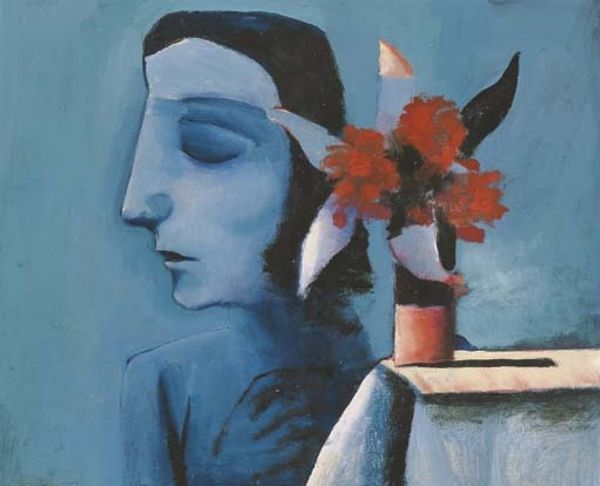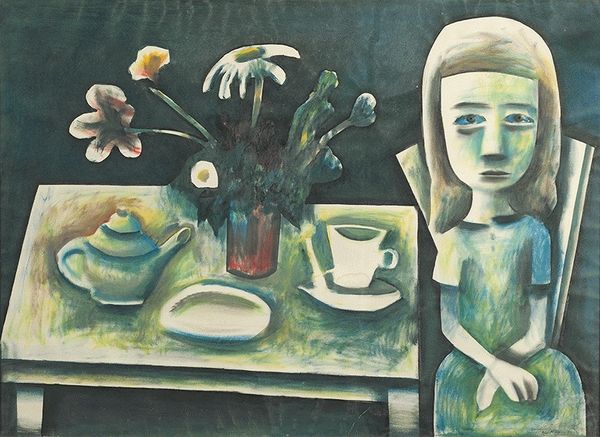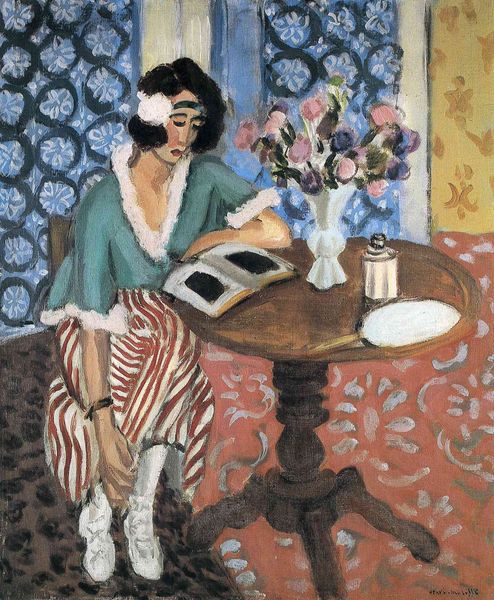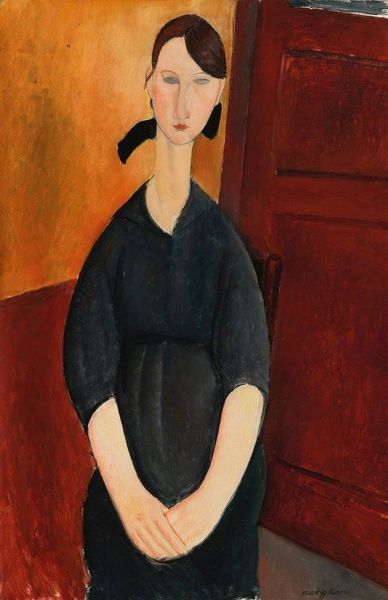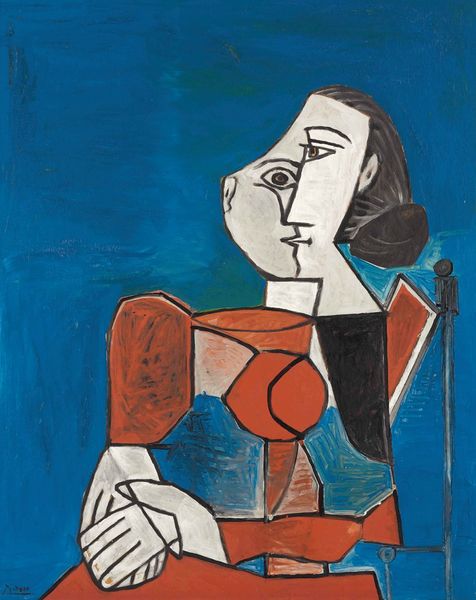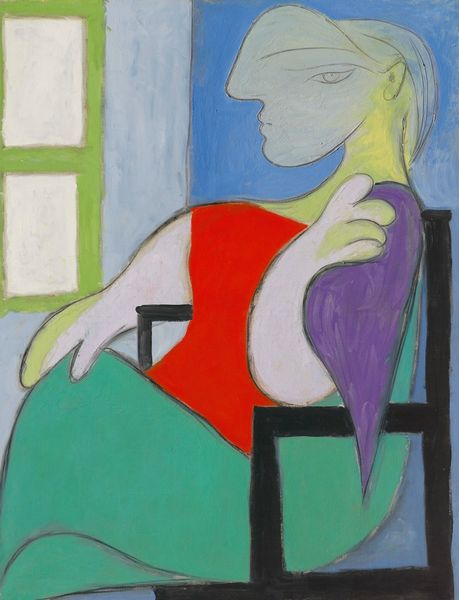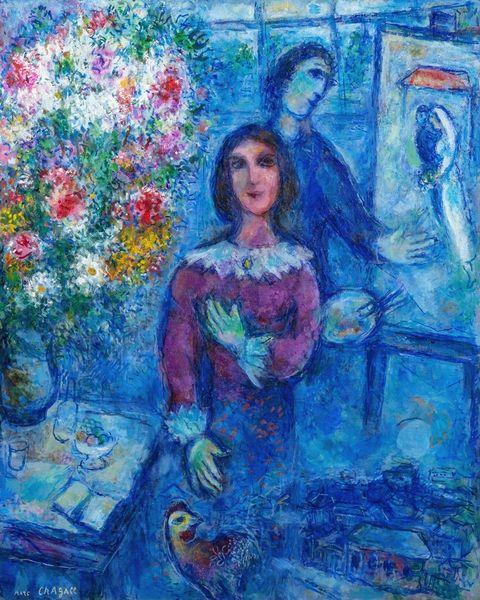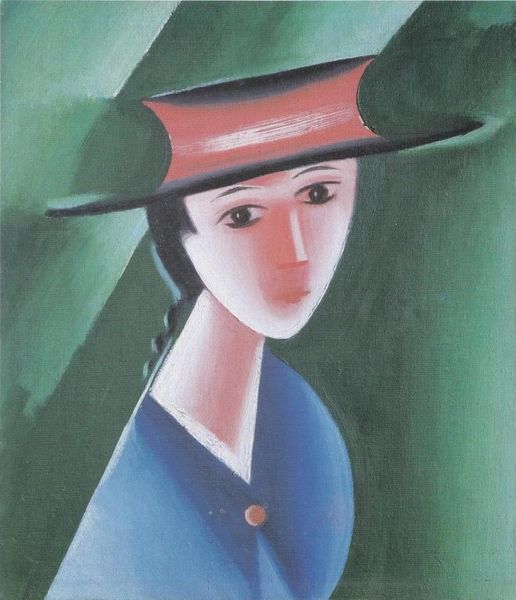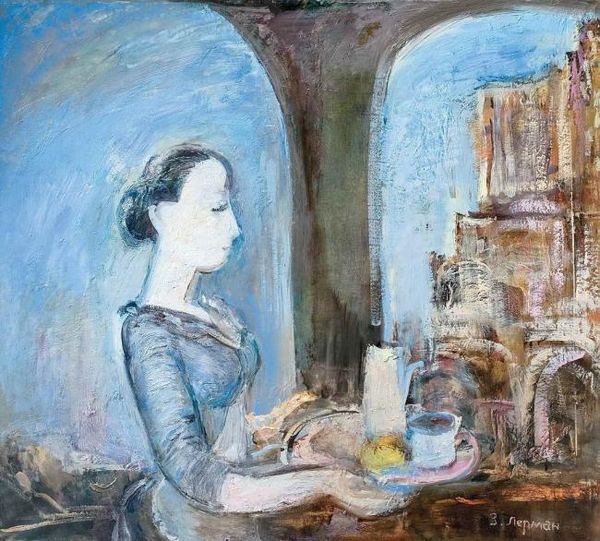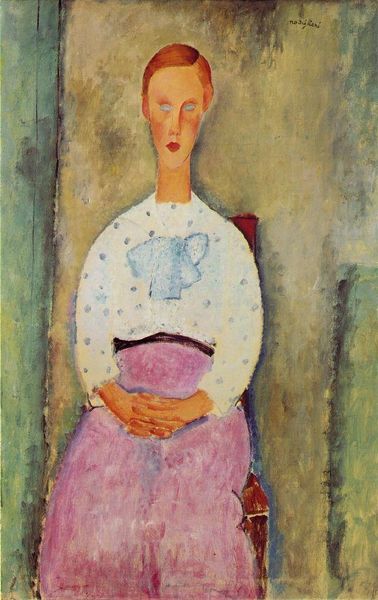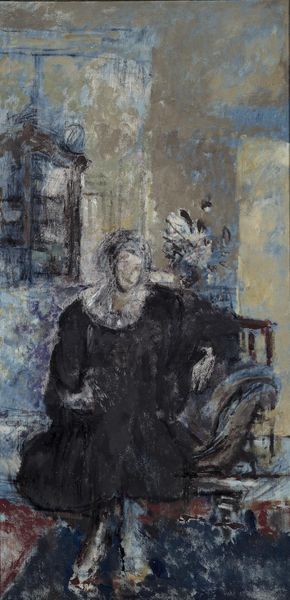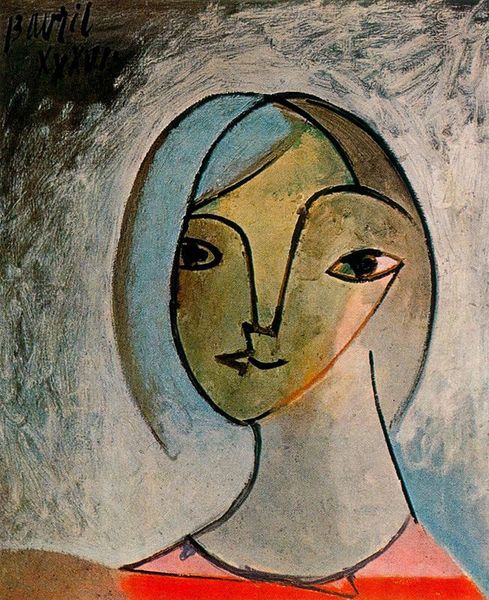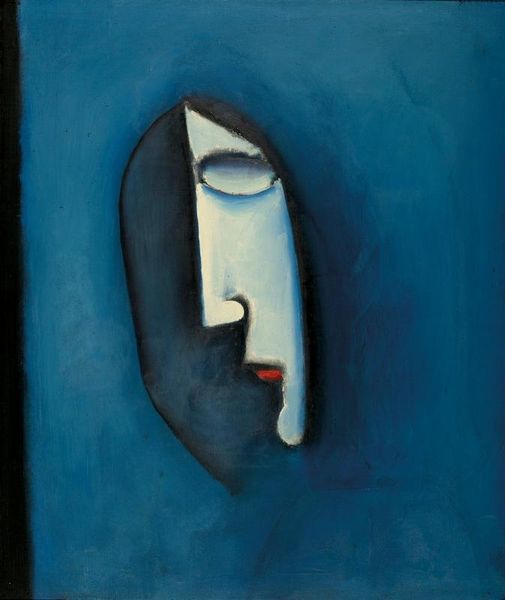
oil-paint
#
portrait
#
oil-paint
#
figuration
#
oil painting
#
genre-painting
#
modernism
Copyright: Charles Blackman,Fair Use
Curator: Charles Blackman's "Barbara at the Table," created in 1956 using oil paint, captures a certain mid-century atmosphere, wouldn't you agree? Editor: Absolutely. The immediate impression is one of melancholy. The cool blue backdrop and Barbara's somber expression really set that tone. Notice the contrasting textures - the smooth, almost flat planes of her face against the impasto of the flowers. Curator: The interesting thing about Blackman is his engagement with social realism alongside his focus on intimate portraiture. The work provides a snapshot into the domestic sphere and, possibly, the restrained roles women occupied within that space during the period. It's a glimpse into postwar social dynamics. Editor: That contextual layer certainly deepens our understanding, but the formal choices themselves communicate so much. Her simplified features are striking; the disproportionately large nose, the long face – they feel almost Modigliani-esque in their elongation, drawing us into a silent and rather personal psychological landscape. Curator: It’s thought that Blackman's personal life had a big influence on his style and focus. In 1950s Australia, Modernist artists like Blackman were finding their place, navigating tradition alongside emerging avant-garde ideals and social expectations. Editor: I agree, and within that personal experience, the work has such unique material presence – the heavy impasto almost seems to bring the textures to life – look closely at the application of colour and composition! Do you think it captures Barbara's character effectively through these technical approaches? Curator: I think so. While perhaps a conventional subject in a way, it portrays a moment frozen in time – the woman with the vase, both existing together in this quiet space. And the viewer is permitted to become the audience to their muted intimacy. Editor: The artwork becomes a visual poem – reflecting more about the experience than about the real identity. I wonder if we can interpret from its use of colour an effort by the artist to draw viewers into these quiet moments with such grace. Curator: A contemplative reflection on societal expectations through the lens of human intimacy…it seems apt, doesn’t it? Editor: I wholeheartedly concur.
Comments
No comments
Be the first to comment and join the conversation on the ultimate creative platform.
